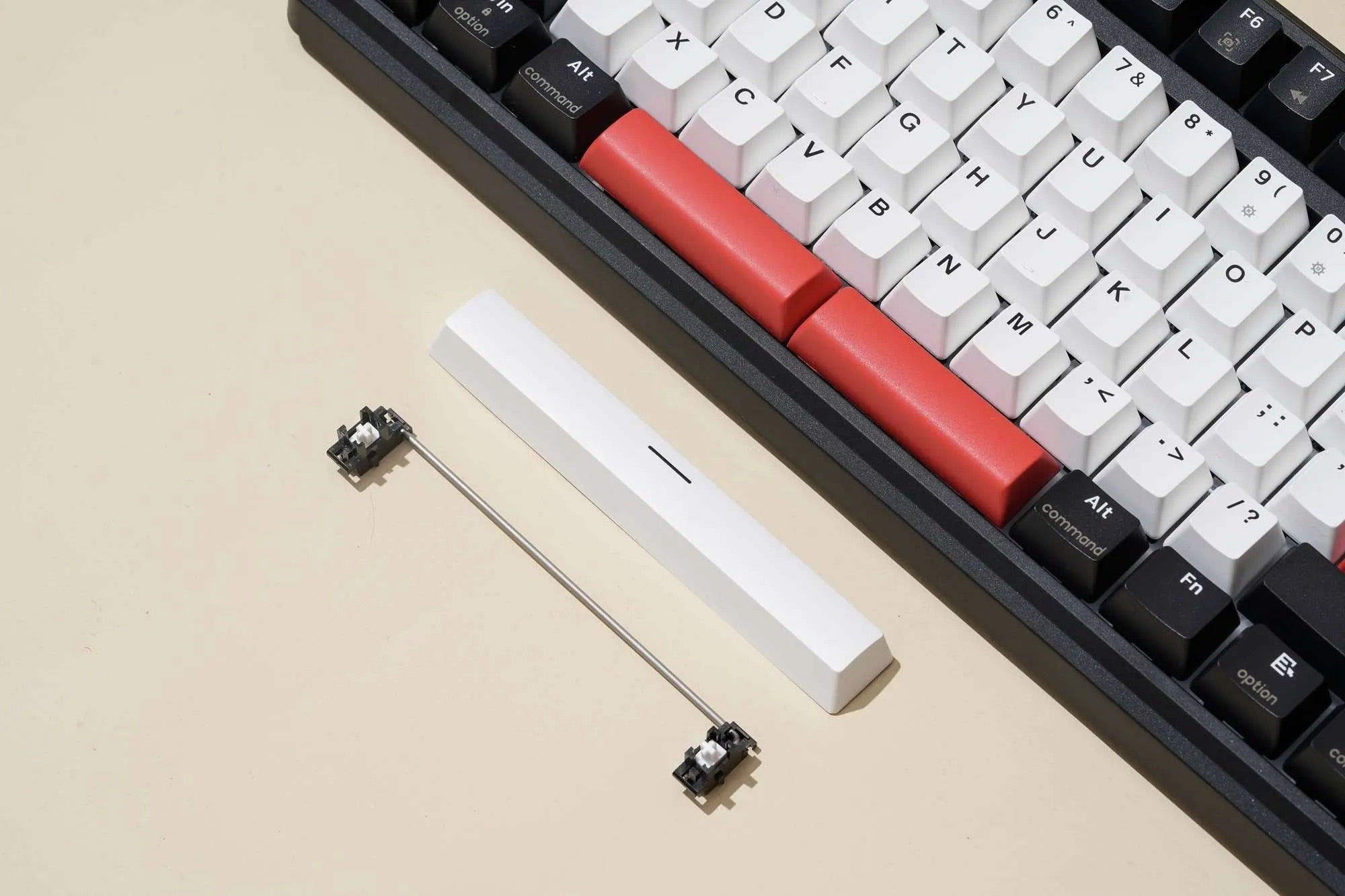When discussing mechanical keyboards, much of the focus is on key switches, keycaps, and layout. However, one crucial component that significantly impacts typing performance is the key stabilizer. Found under larger keys like the spacebar, shift, enter, and backspace, stabilizers ensure these keys press down smoothly and evenly. But how much do they really affect your typing experience? Let’s explore their role, types, and impact on performance.
What Are Key Stabilizers?
Key stabilizers (often called "stabs") are mechanisms designed to keep larger keys from wobbling or tilting when pressed. Without stabilizers, these keys would feel uneven, inconsistent, and could even get stuck during use. Stabilizers distribute the force of a keystroke across the entire key, ensuring smooth actuation.
Types of Key Stabilizers
There are several common types of stabilizers, each with unique characteristics:
1. Plate-Mounted Stabilizers
-
Mounted directly onto the keyboard plate
-
Easier to install and remove
-
Common in prebuilt and budget mechanical keyboards
-
May produce more rattle compared to PCB-mounted stabilizers
2. PCB-Mounted Stabilizers
-
Inserted directly into the keyboard’s PCB (Printed Circuit Board)
-
More secure and stable compared to plate-mounted stabilizers
-
Common in custom mechanical keyboards
-
Often preferred for better sound and feel
3. Screw-In Stabilizers
-
A variation of PCB-mounted stabilizers that screw into the PCB for additional stability
-
Generally regarded as the best stabilizer type due to reduced wobble and noise
-
Found in high-end custom keyboards
4. Clip-In Stabilizers
-
Also mounted to the PCB but without screws
-
Easier to install and remove than screw-in stabilizers but less secure
-
Can be modded for improved performance
How Key Stabilizers Affect Typing Performance
1. Keypress Consistency
Stabilizers help large keys feel uniform when pressed, preventing tilting or uneven actuation. Poorly stabilized keys can lead to inconsistent typing, especially for fast typists and gamers.
2. Sound Profile
Rattling stabilizers can be distracting and unpleasant. Properly tuned stabilizers contribute to a smoother, quieter, and more satisfying typing experience.
-
Stock Stabilizers: Often come with excessive rattling or ticking
-
Lubed Stabilizers: Reduce noise and provide a buttery smooth feel
-
Modded Stabilizers: Clipping, band-aid modding, or using thicker lube can improve performance
3. Typing Speed & Comfort
Unstable keys can slow down typing by requiring additional force or readjustments. Proper stabilizers enhance comfort, allowing for a more fluid typing rhythm without extra effort.
4. Gaming Performance
For gamers, a shaky or unresponsive spacebar can negatively impact gameplay. A properly stabilized keyboard ensures that all keypresses are registered reliably without unwanted movement.
How to Improve Stabilizer Performance
-
Lubrication: Applying grease or lube to stabilizers reduces rattle and improves key movement.
-
Clipping: Trimming extra plastic from certain stabilizers (on Cherry-style ones) can enhance stability.
-
Band-Aid Modding: Placing small foam pads underneath stabilizers can soften bottom-out impact.
-
Upgrade to Screw-In Stabilizers: If your keyboard supports it, switching to screw-in stabs offers better durability and consistency.
Conclusion
Key stabilizers play a crucial role in mechanical keyboards, affecting typing consistency, sound, and comfort. Whether you’re a typist or a gamer, properly tuned stabilizers can make a significant difference in your overall keyboard experience. Investing in high-quality stabilizers and simple mods can elevate your typing performance and enjoyment to a whole new level.






